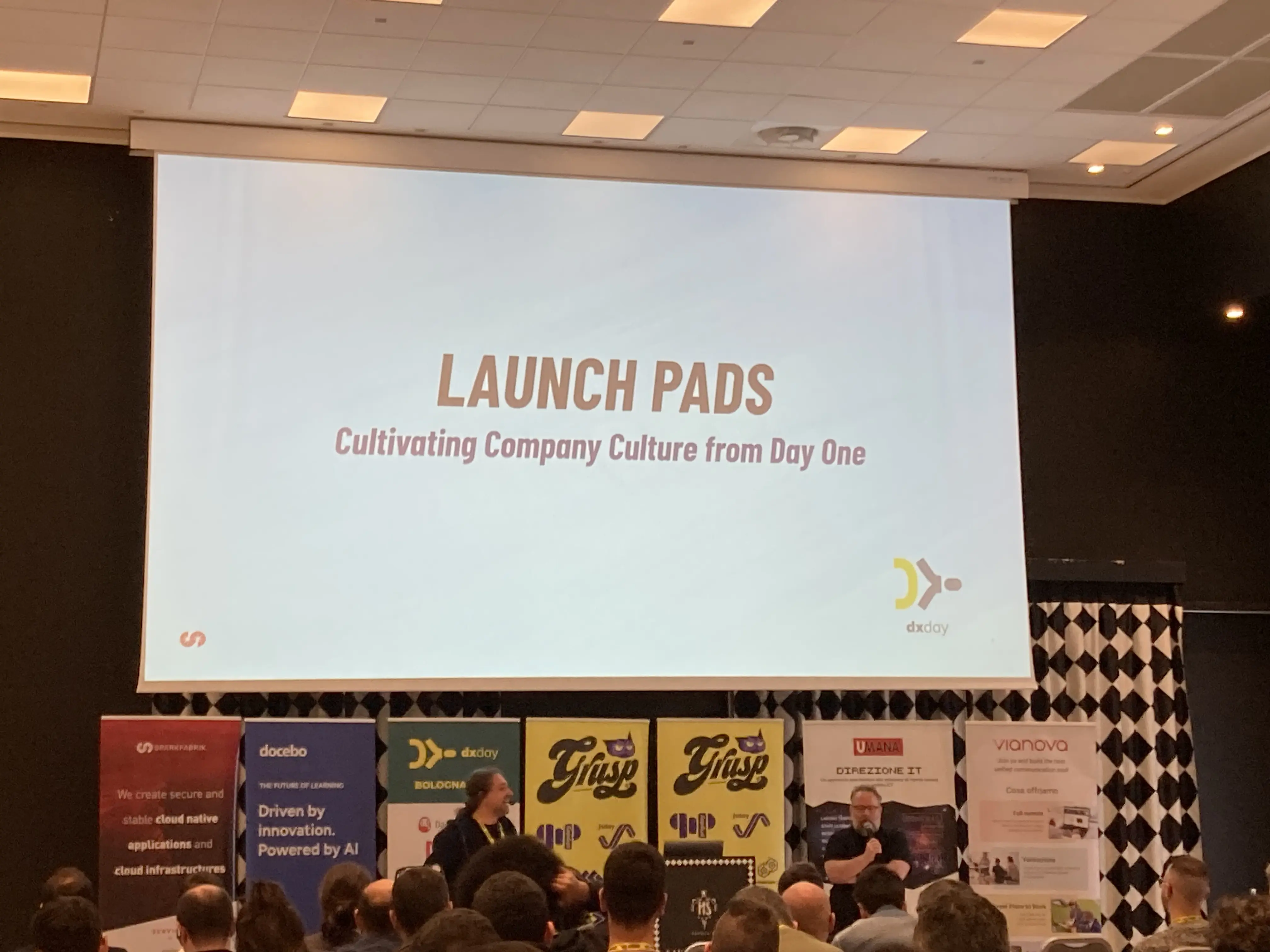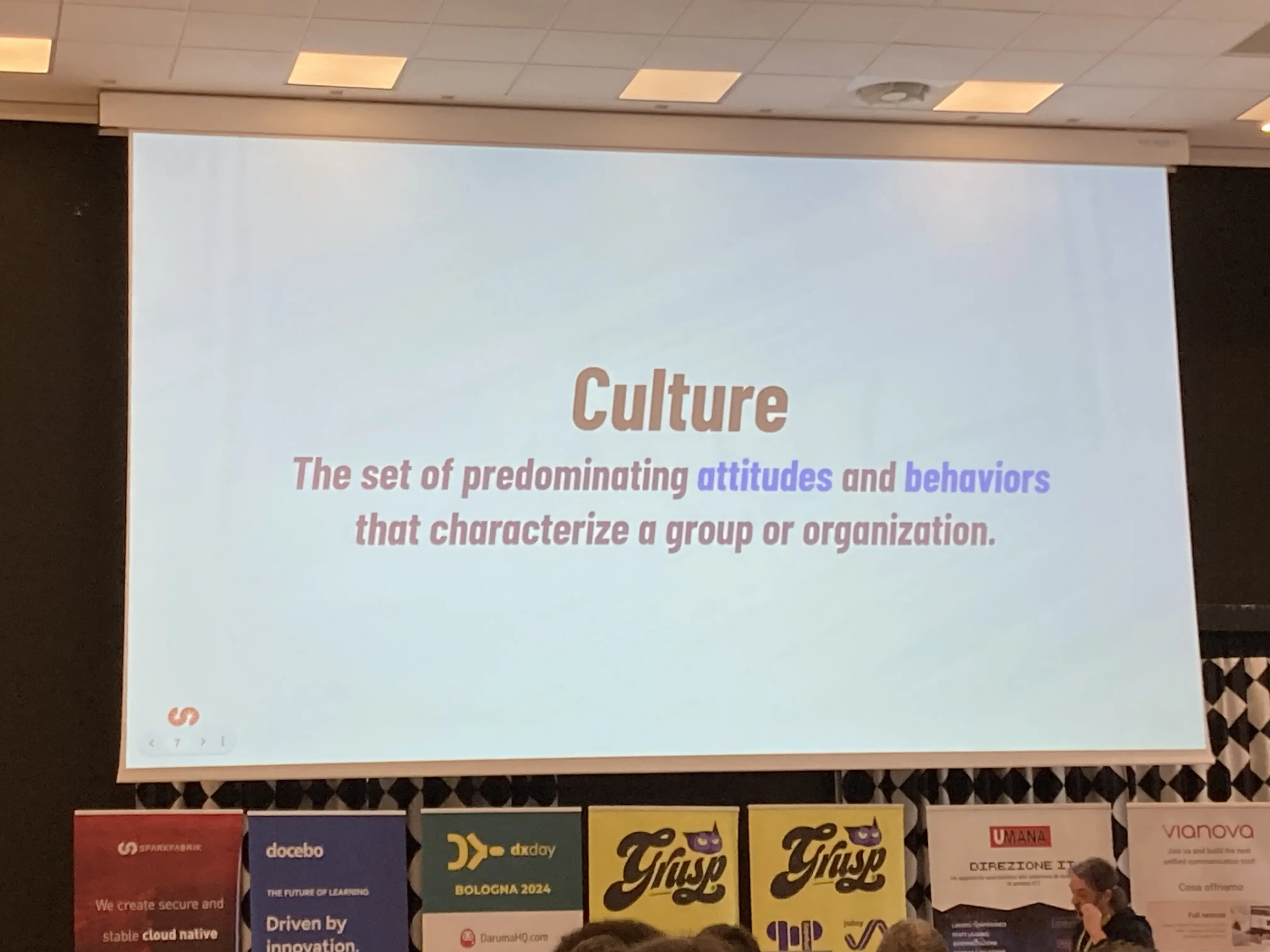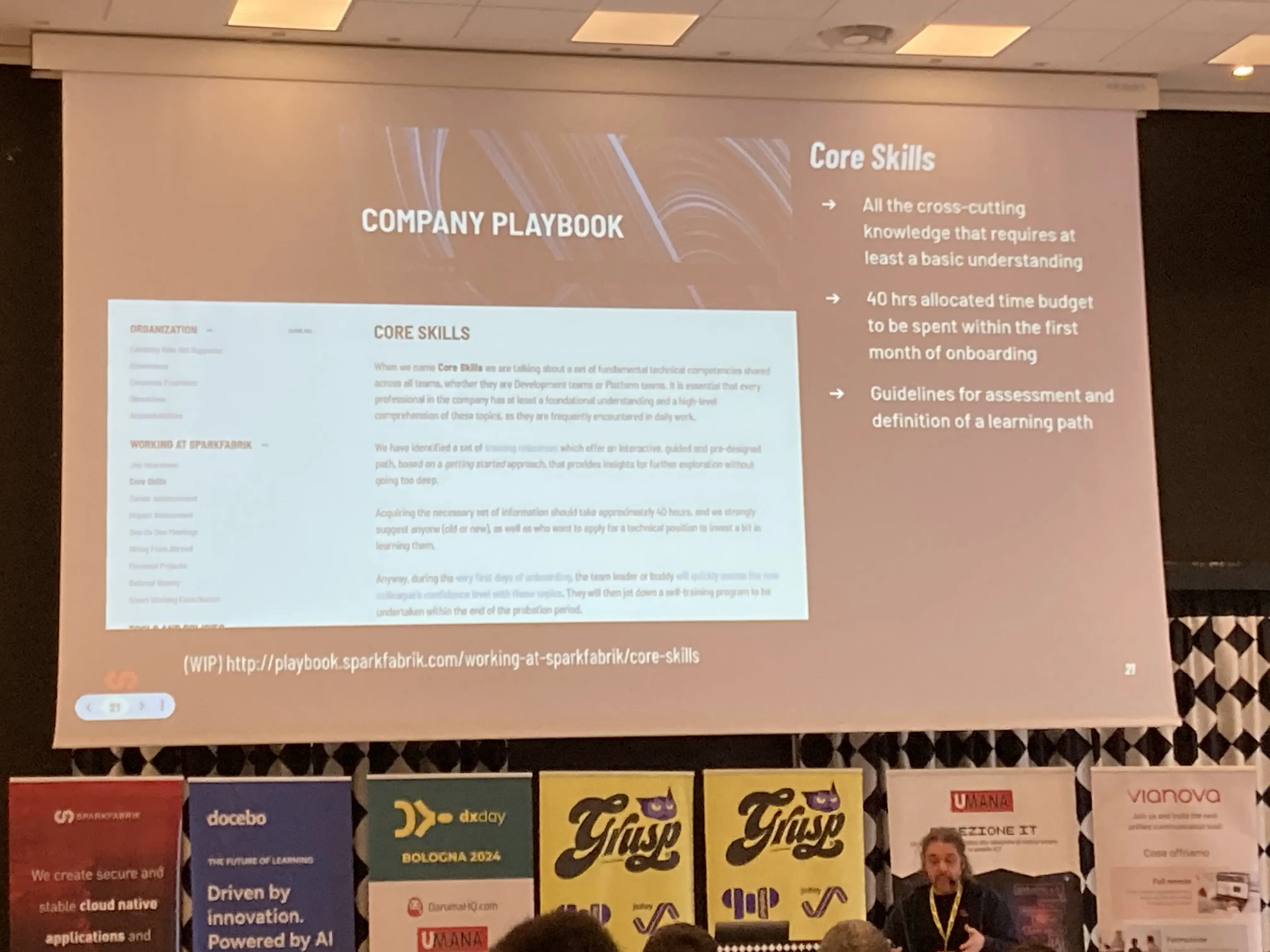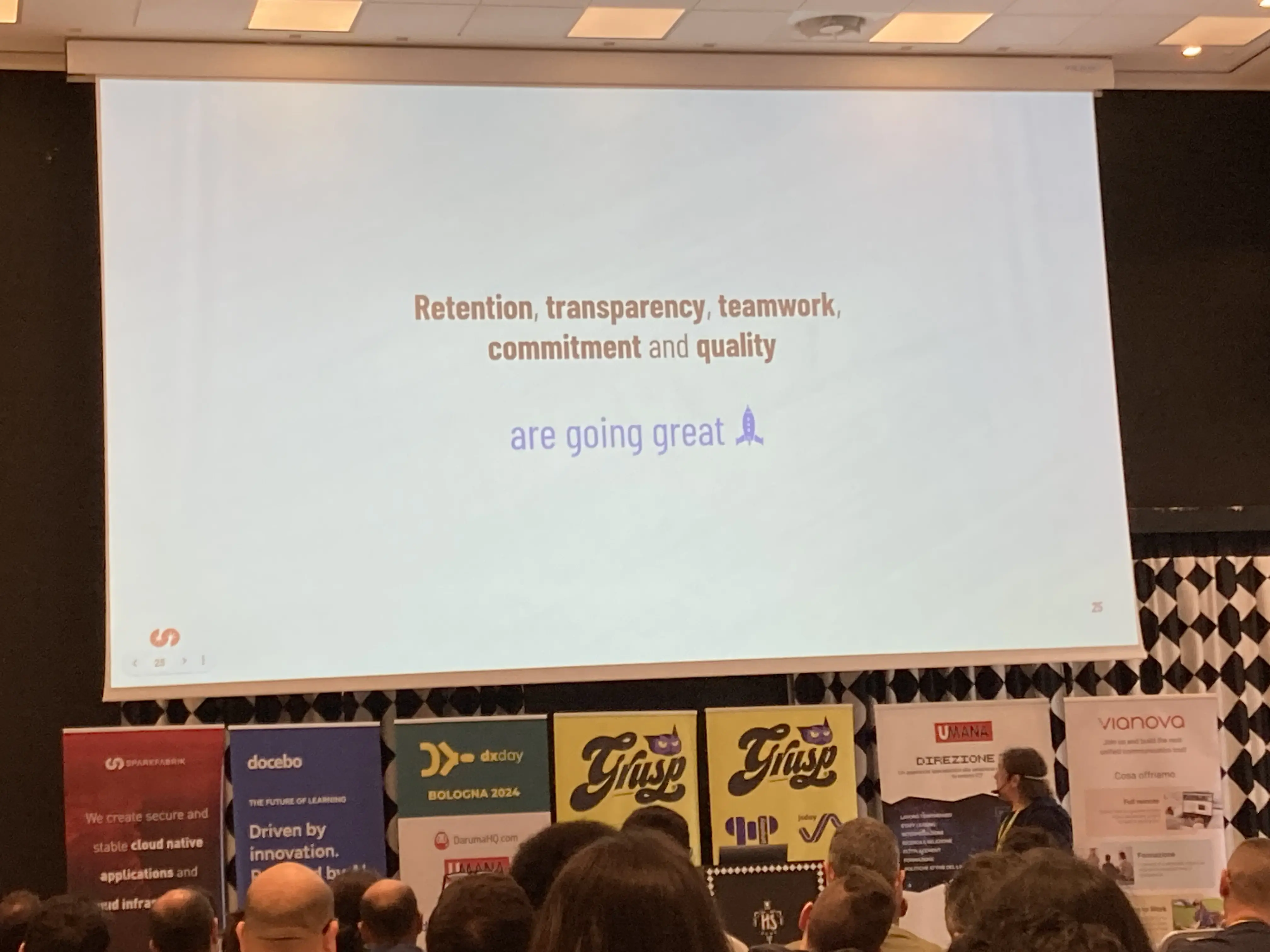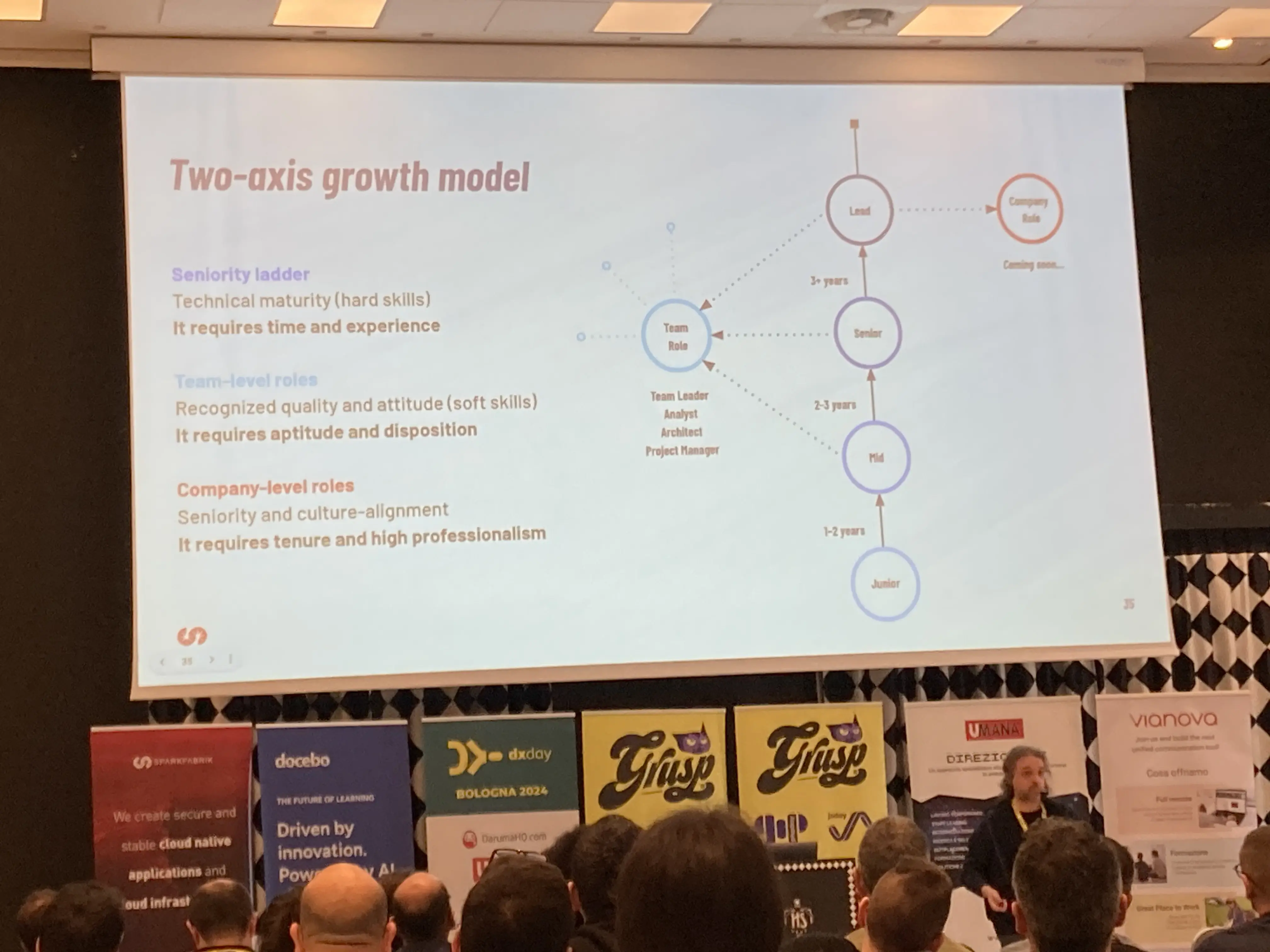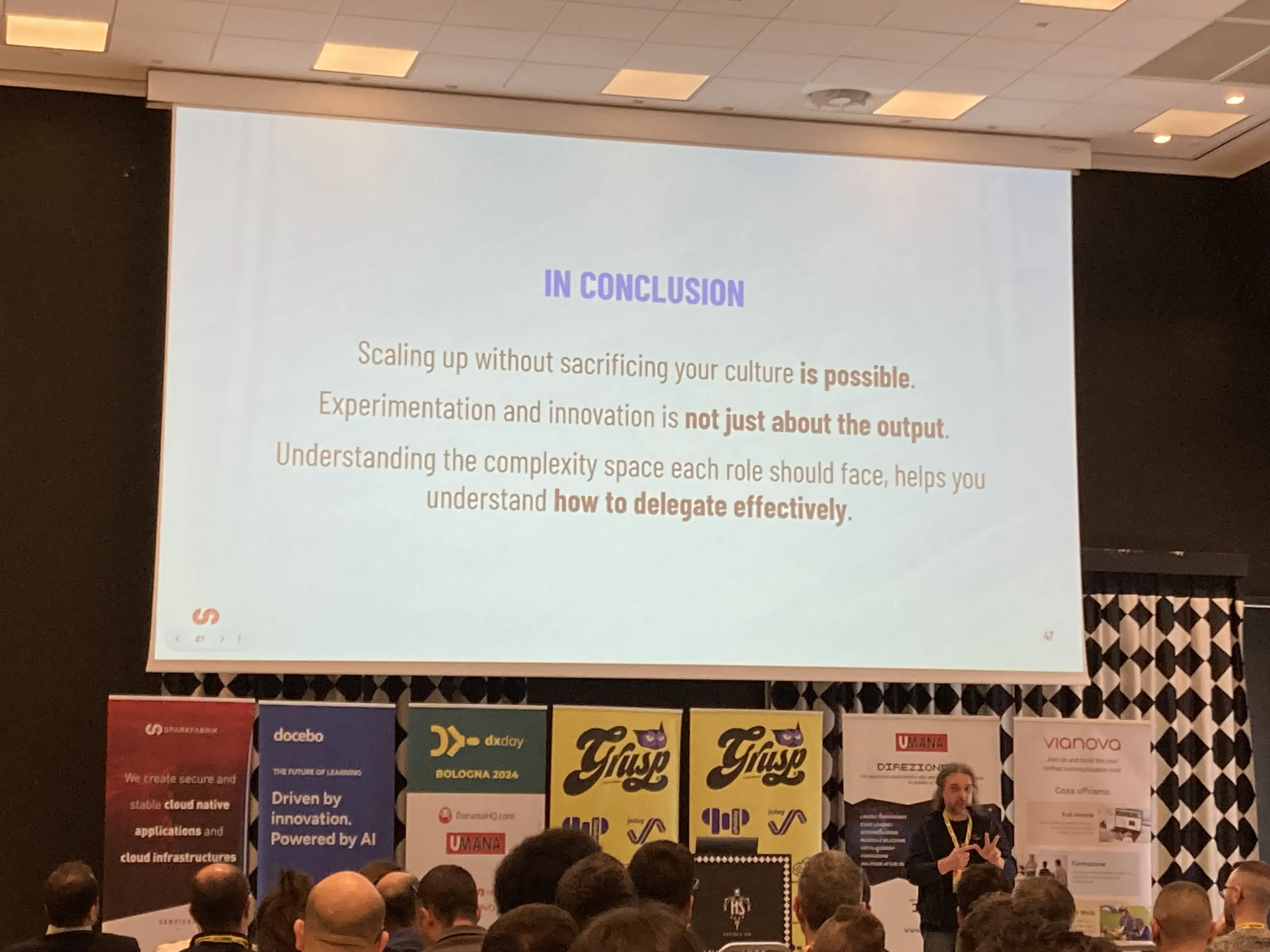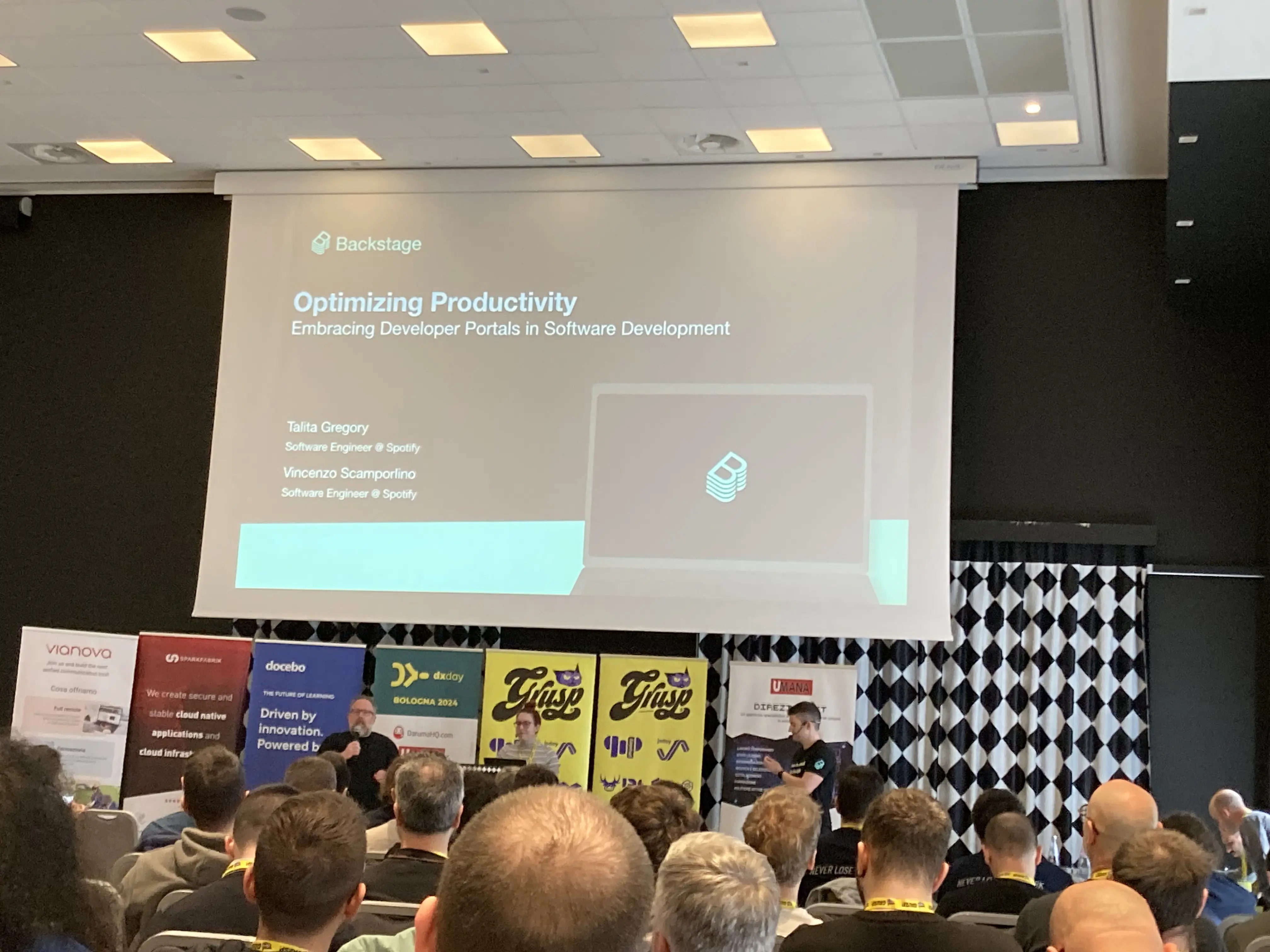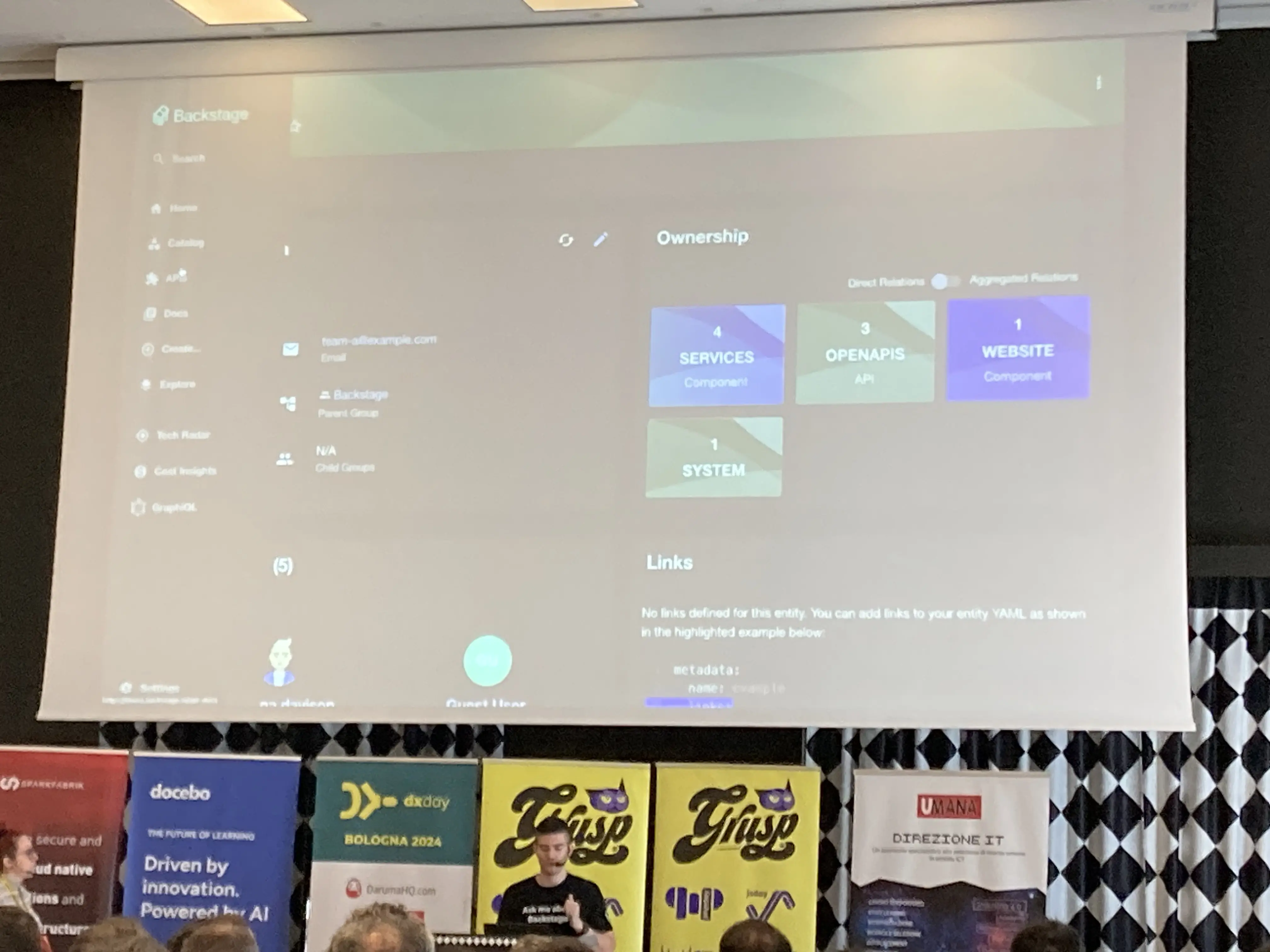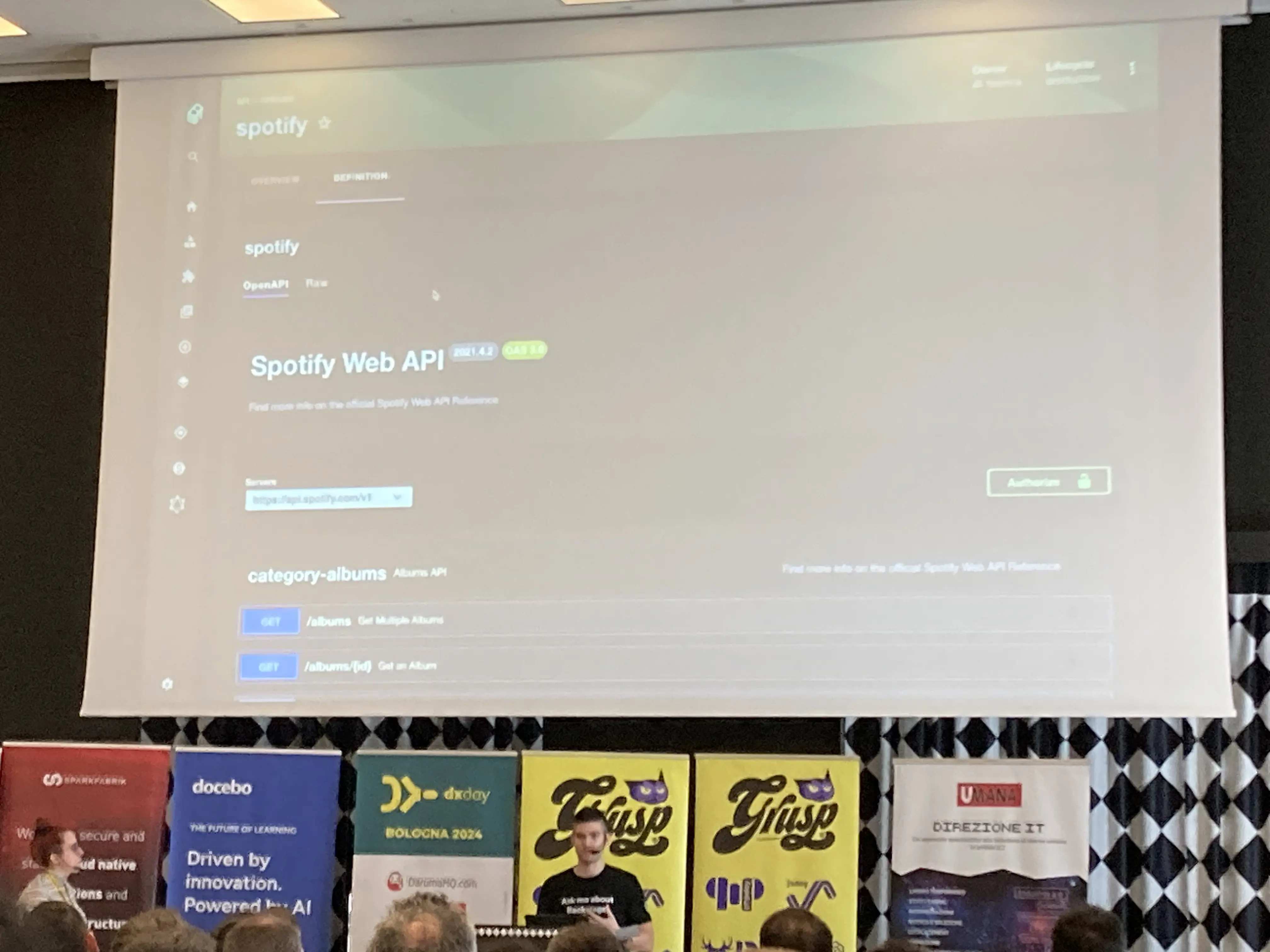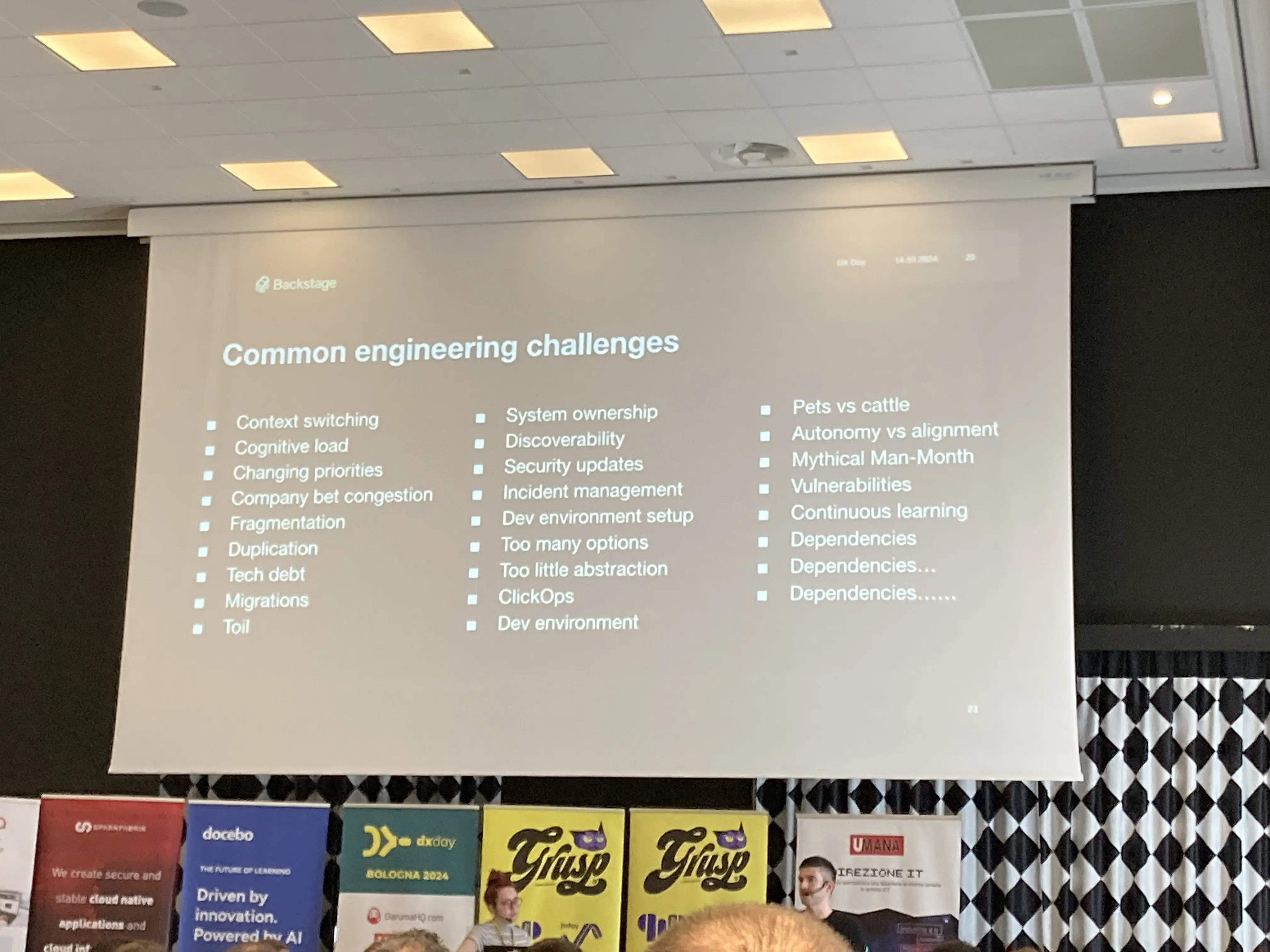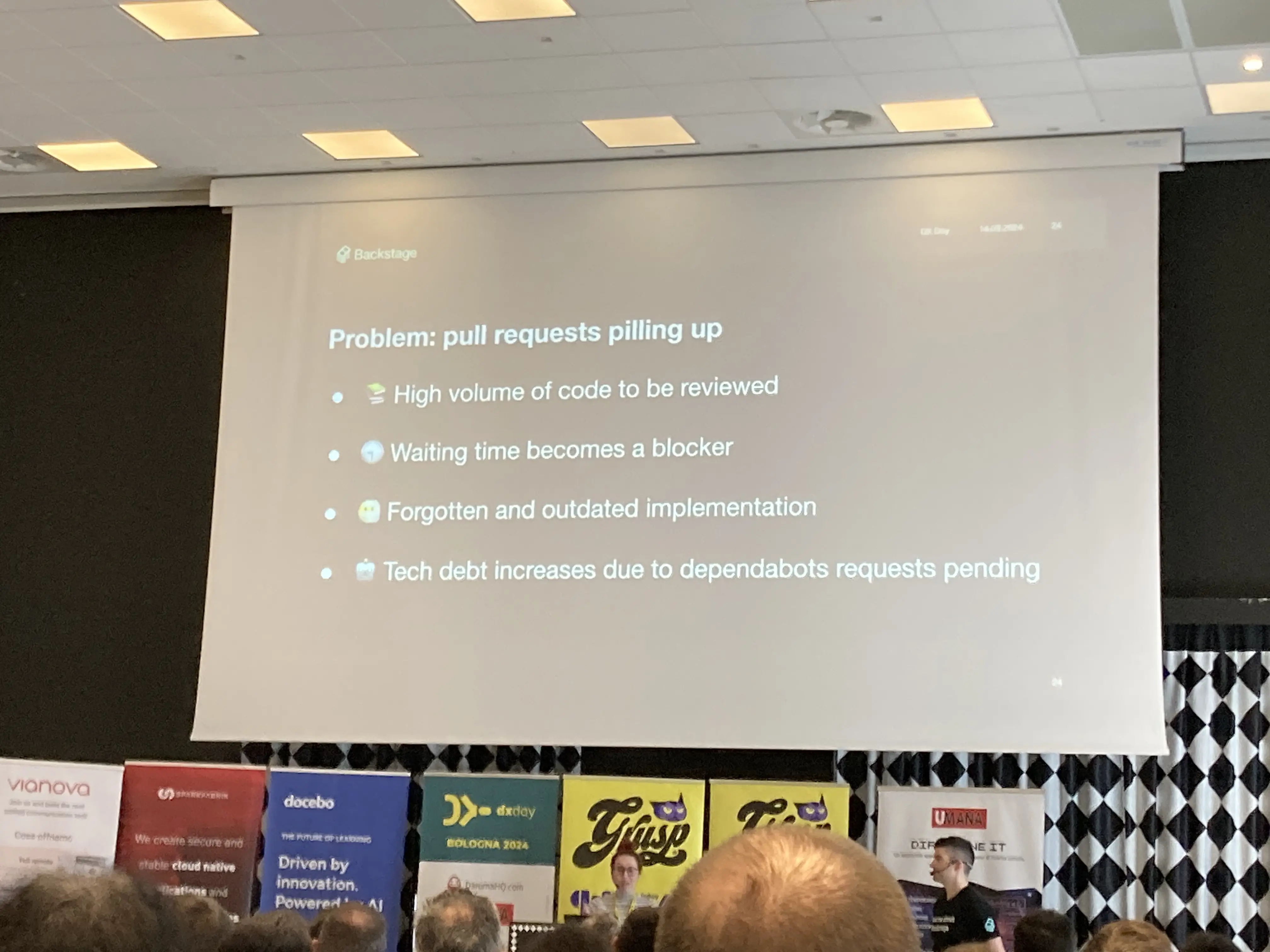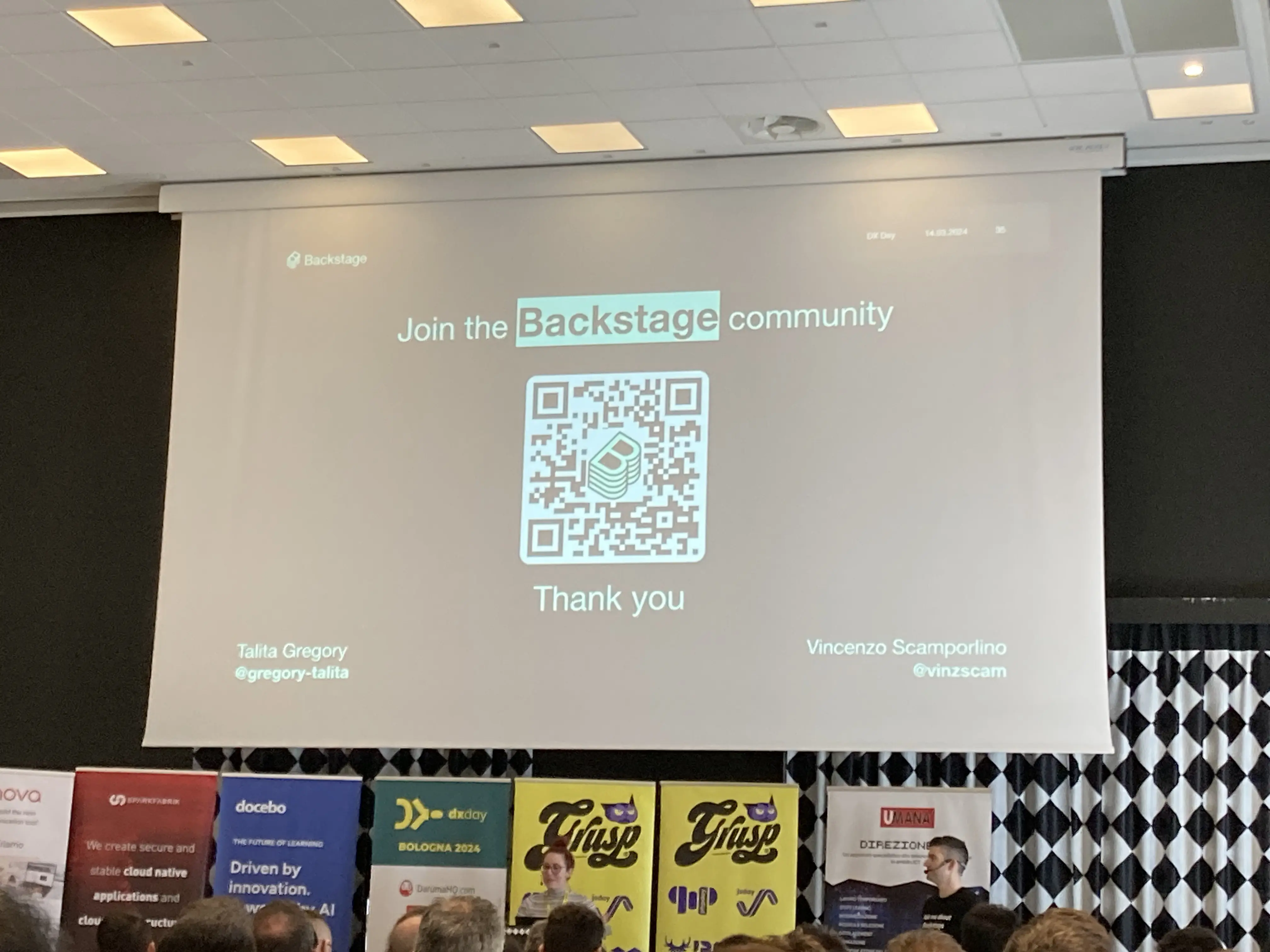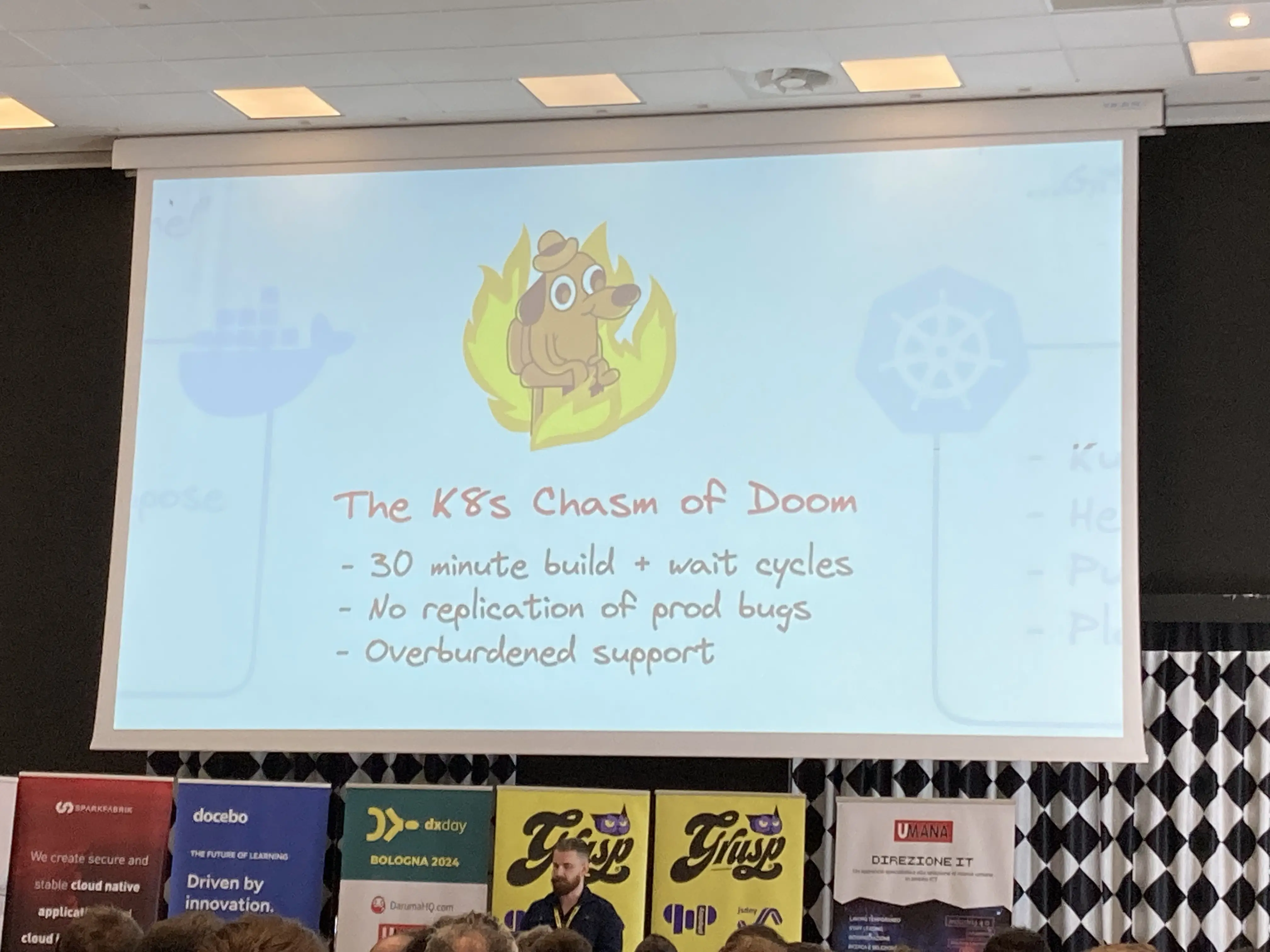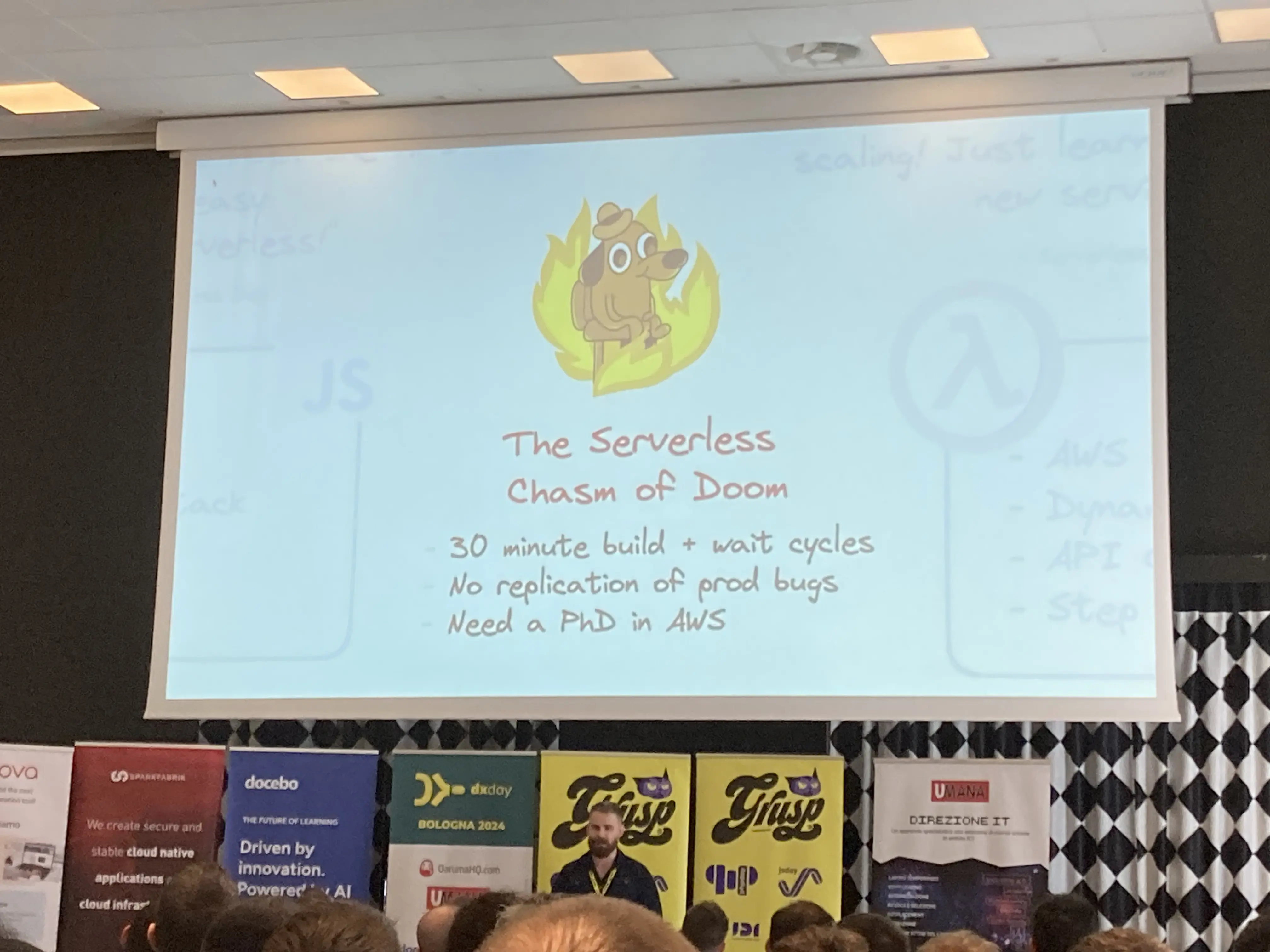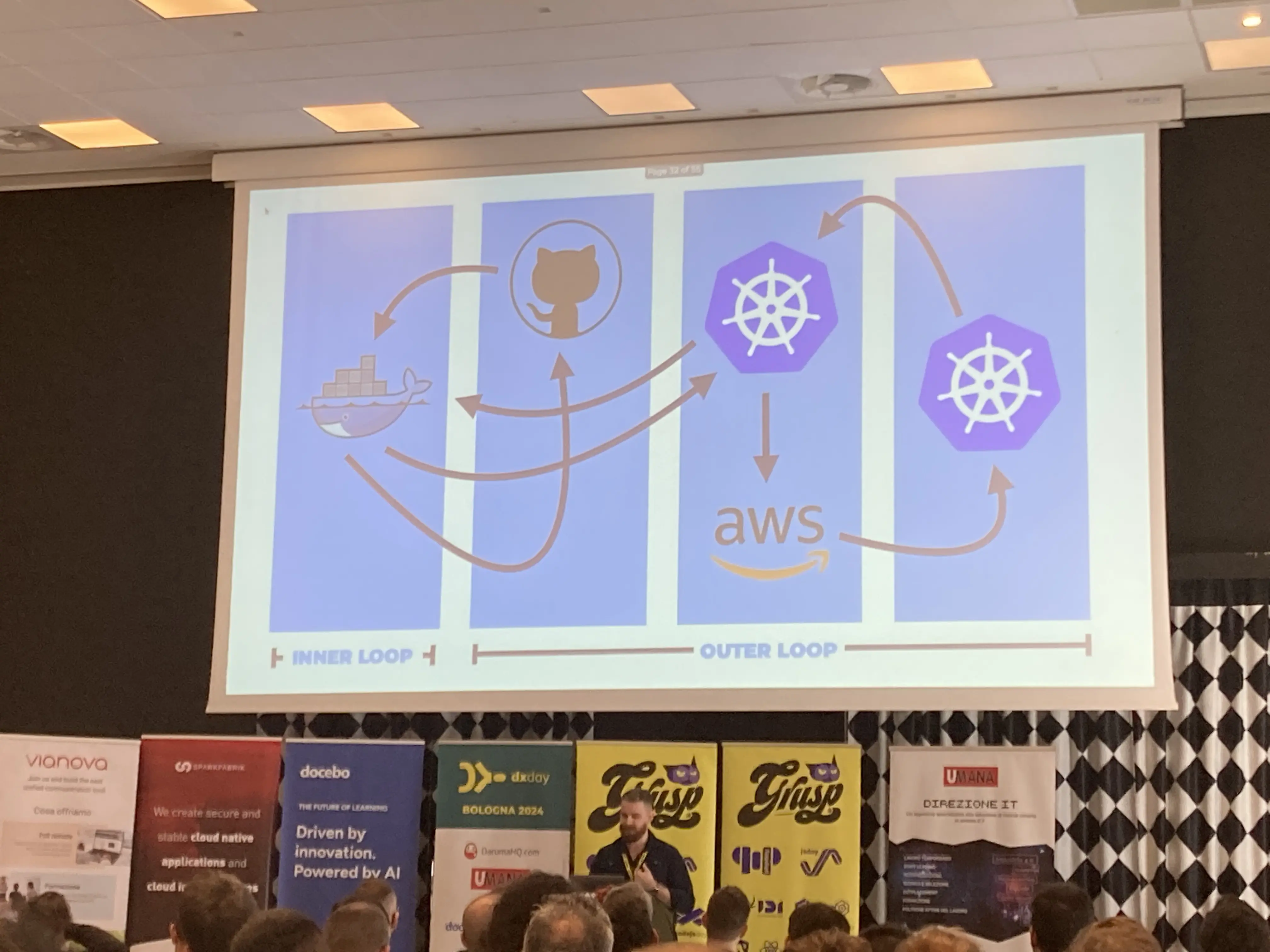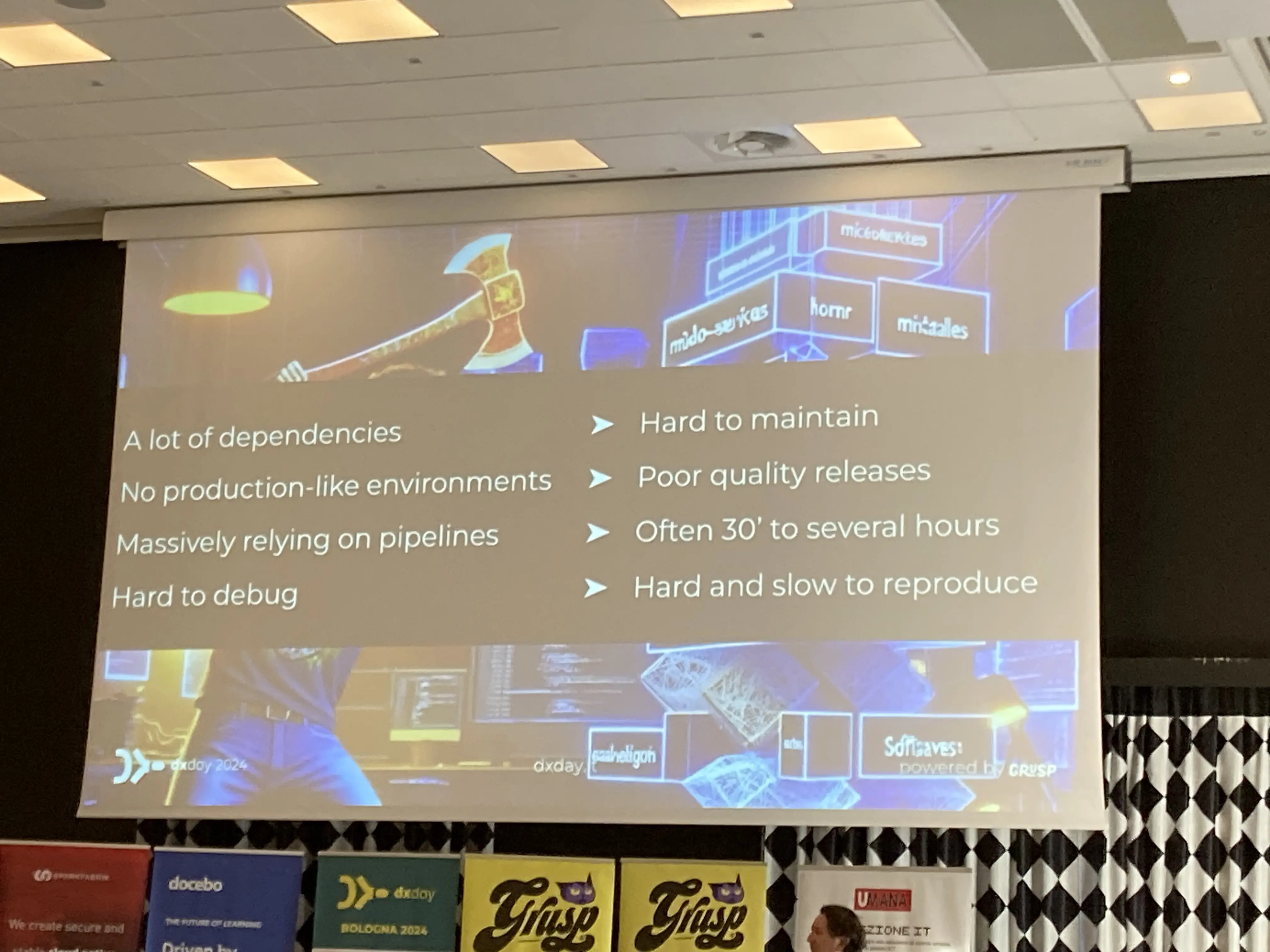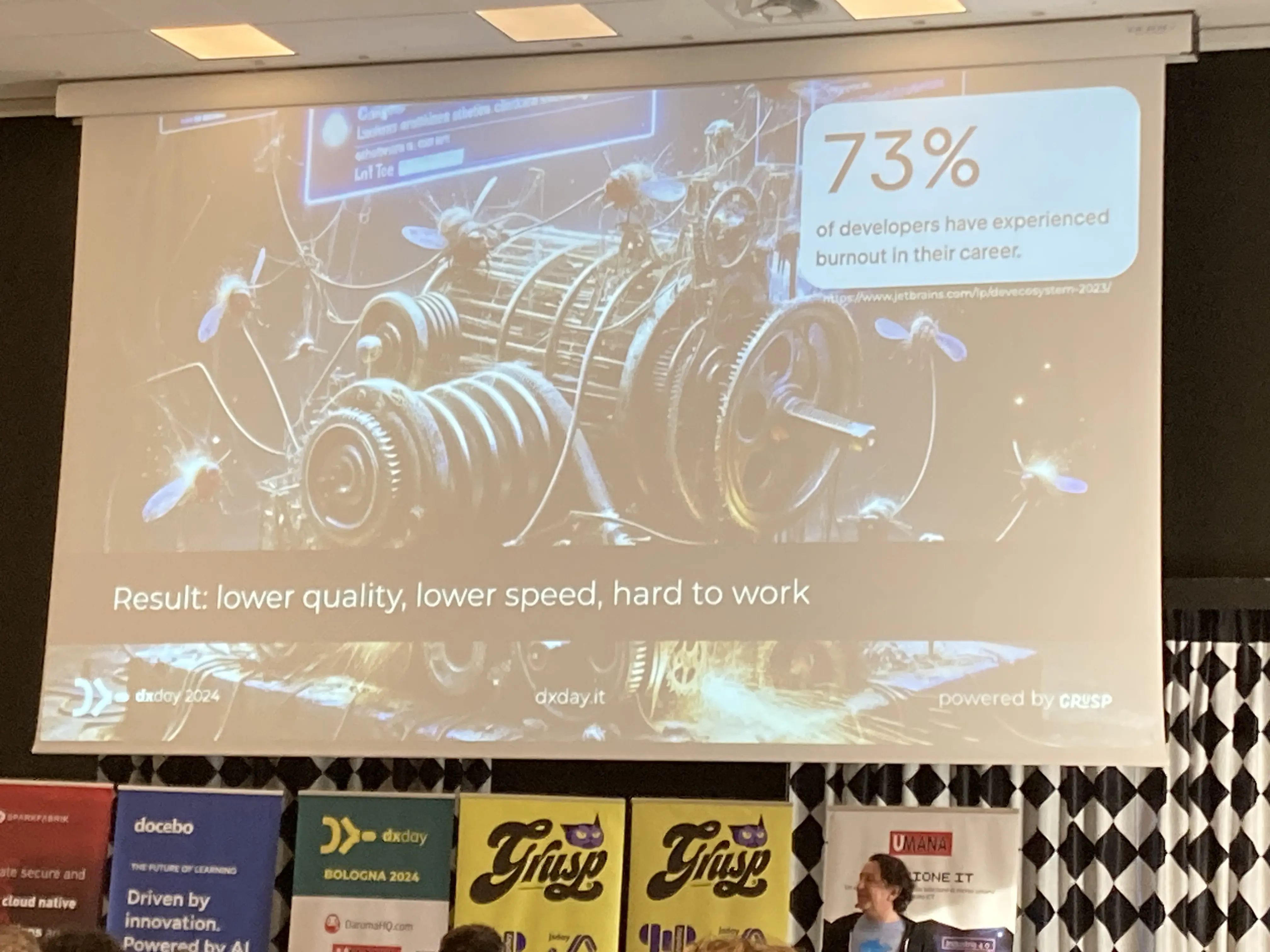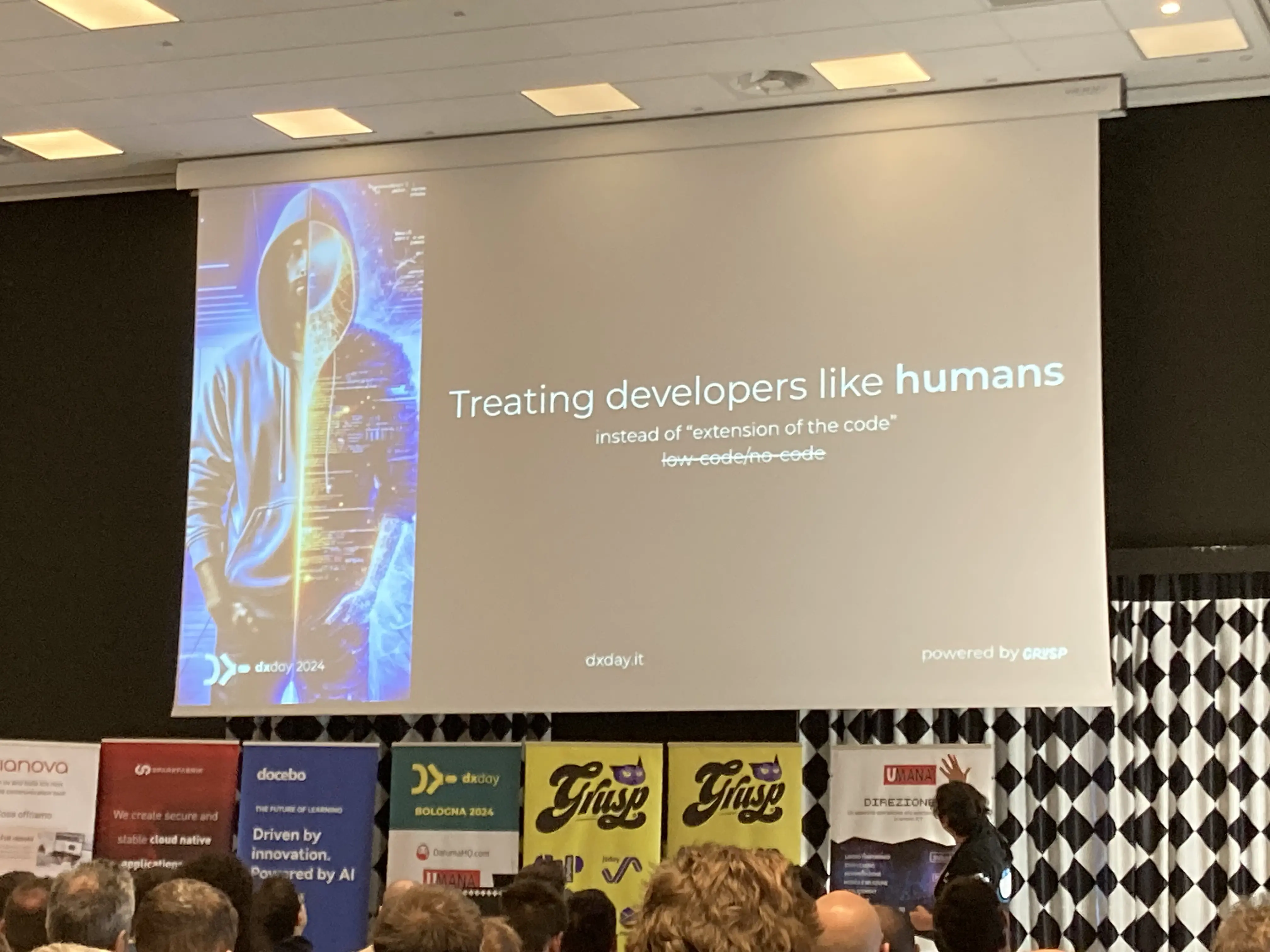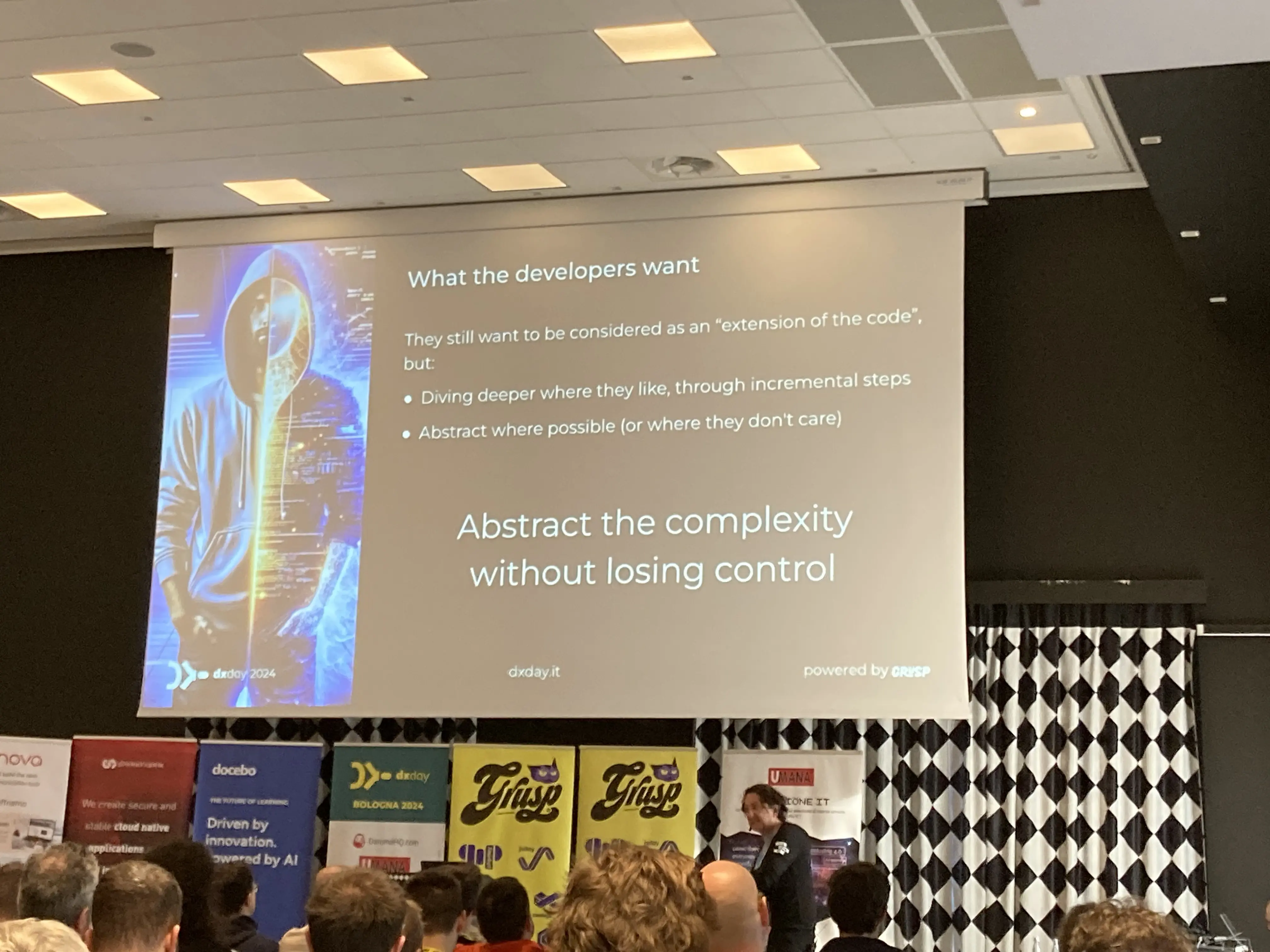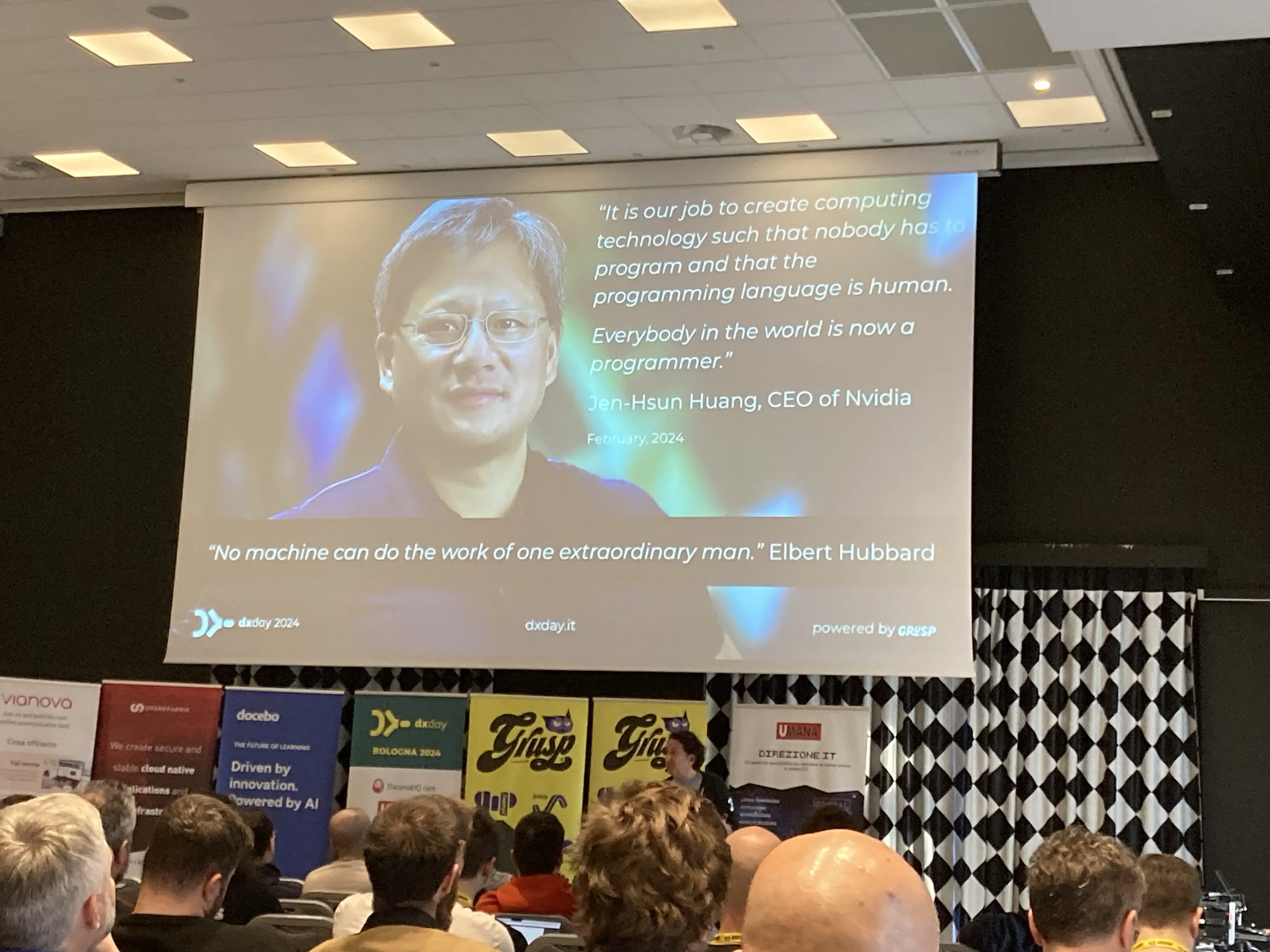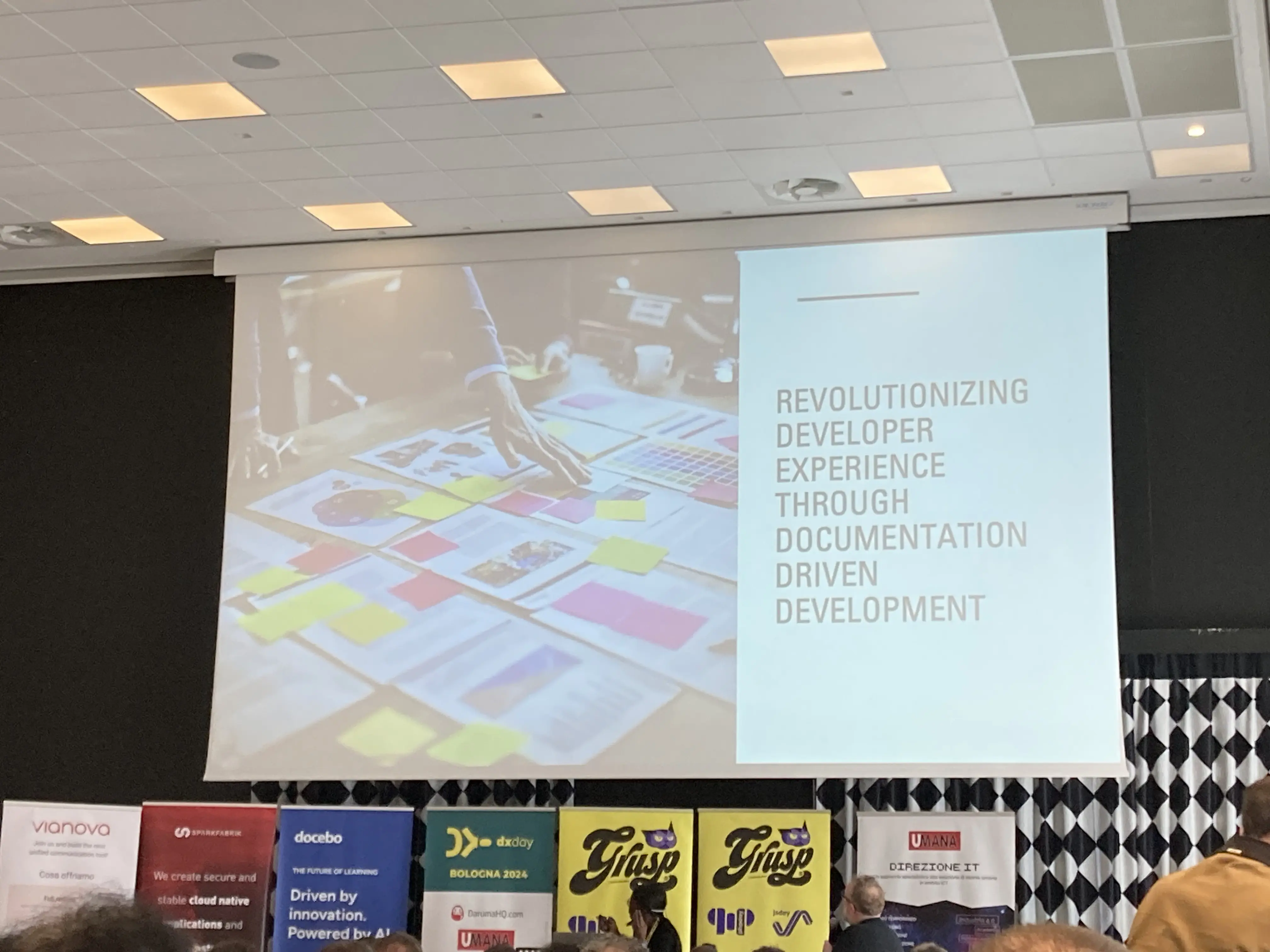DxDay 2024 has been the 1st edition of the international conference dedicated to developer experience, which is the study of how people, processes, culture and tools affect the ability of developers to work efficiently.
Developer experience refers to the overall experience that developers have while working with a particular platform, framework, or tool. It encompasses various aspects such as ease of use, documentation, tooling, debugging capabilities, and community support. A good developer experience ensures that developers can write code more efficiently, debug issues effectively, and collaborate with others seamlessly.
Developer Experience for Platform Engineers
Developer experience and platform engineering are inter-related because they both focus on improving the efficiency, productivity, and satisfaction of developers.
Platform engineering involves designing, building, and maintaining the underlying infrastructure and systems that support the development process. This includes setting up development environments, managing dependencies, automating build and deployment processes, and ensuring scalability and reliability of the platform. Platform engineering aims to provide a solid foundation for developers to work on, enabling them to focus on writing code rather than dealing with infrastructure complexities.
The relationship between developer experience and platform engineering is symbiotic. A well-designed and well-maintained platform engineering infrastructure directly contributes to a better developer experience. For example, if the platform provides easy-to-use development tools, clear documentation, and efficient build and deployment processes, developers can work more efficiently and with fewer obstacles. This, in turn, leads to increased productivity and satisfaction.
Conversely, a poor developer experience can hinder productivity and lead to frustration. If the platform lacks proper tooling, has outdated documentation, or suffers from slow build and deployment processes, developers may face unnecessary challenges and inefficiencies. This can result in wasted time, increased frustration, and decreased motivation.
Therefore, by investing in platform engineering and prioritizing developer experience, organizations can create an environment that fosters productivity, collaboration, and innovation among developers.
Internal Developer Platforms
An Internal Developer Platform significantly improves the developer experience by simplifying and optimizing development processes, allowing developers to focus on creating value and innovation rather than managing infrastructure and operational processes.
IDPs play a crucial role in the developer experience, acting as an infrastructure or framework that standardizes and simplifies software development processes within an organization.
An IDP automates repetitive processes such as CI/CD, infrastructure provisioning, and configuration, reducing manual errors and freeing developers to focus on writing code.
It provides a standard set of tools, practices, and procedures that all developers in the organization can follow, ensuring consistency and quality throughout the software development lifecycle.
It allows developers to initiate, configure, and manage development and production environments without the need for manual intervention from operations or infrastructure teams, speeding up the development process.
It integrates security and compliance controls into the development process, ensuring that applications are secure by default and compliant with required standards.
It enhances collaboration between development, operations, and security DevSecOps teams by providing visibility across the entire software development lifecycle, facilitating problem resolution and workflow understanding.
It reduces the time spent on configuring and managing infrastructure, as well as the costs associated with managing disparate and non-standardized environments.
Cloud and Large Language Models
For a platform engineer, it is important to develop and standardize the adoption and use of cloud tools and Large Language Models, because they enhance the developer experience by simplifying development and deployment, improving collaboration, accelerating learning and innovation, and helping to maintain high software quality.
Cloud tools provide developers with access to virtually unlimited computational resources without the need to physically manage the hardware. This allows applications to scale efficiently and cost-effectively according to demand. They can provide consistent development and testing environments, reducing the “it works on my machine” problem. This helps ensure that the software works as expected across all environments. They facilitate collaboration among geographically distributed teams, enabling shared access to projects, code, and resources in real-time. They support the automation of CI/CD pipelines, which accelerates the release of new features and fixes.
LLMs can help developers generate code, documentation, and test cases more efficiently. This can significantly reduce development time and improve code quality.
References
https://tech.sparkfabrik.com/en/blog/dxday/
A special shoutout to Abiodun Olowode for sharing with us the importance of documentation

